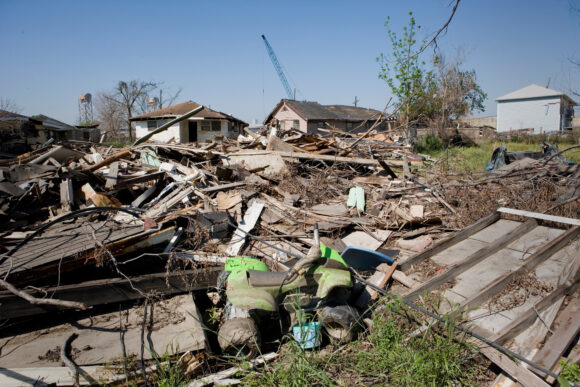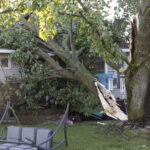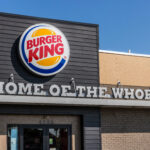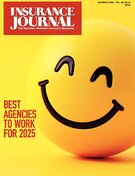I recently read several articles marking the 20th anniversary of Hurricane Katrina. The articles covered a plethora of changes, including ISO form changes, the quality of claims serviced, the enormous financial cost, the unreal people cost, the improvement in the design/maintenance/governance of the levees, and even the improved acknowledgement that risk management matters in insurance. After all, with two centuries of insurance, who would have guessed risk management really matters?
I performed a significant amount of errors and omissions (E&O) work in New Orleans and the surrounding area over the ensuing years after the hurricane. I was in New Orleans so often, my family suggested I get an apartment. On my first trip to New Orleans after Hurricane Katrina, the day after the airport reopened, a client gave me a tour. The flooded areas were like Mars. Everything was a monotonous shade of gray dirt. The trees, the abandoned cars, and the buildings, literally everything was the same color. Few commercial businesses were open, and the hotels that survived were jam-packed, often with FEMA personnel. The refrigerators set along the street for trash pickup in the neighborhoods that were otherwise untouched were a major surprise. It turns out that rotten food permeates a refrigerator’s casing over time, and those otherwise untouched neighborhoods did not have electricity for days and days.
The postmortem on the storm, which my client clearly conveyed to me on that first trip, was that this was a man-made disaster caused by incompetence in managing the levees. It is sad that people must suffer so much loss for actions to be taken that should have happened long ago.
In reflecting on my experiences and subsequent changes to property and property insurance, my thoughts include issues mostly surrounding agency E&O and mandated building codes.
Errors & Omissions
The E&O claims were awful. Somewhere around 98% of my clients’ E&O claims were dismissed or won fairly quickly because the claims had no basis. In some cases, insureds were simply desperate. In other cases, they were greedy. In some cases, they claimed the agent, literally–and I am not exaggerating–should have been making all insurance coverage decisions for the insured without the insured’s consent. This means that ambulance-chasing attorneys were aiding and abetting in each of the hundreds, if not thousands, of E&O claims. Making the situation worse, these attorneys inflated the hopes of homeowners who had lost their homes.
I also discovered how deeply my clients cared for their customers. They were going through their own suffering, their staff was going through their own losses, and yet they were working long hours on behalf of their clients. In fact, in a few cases I experienced, I felt the deluge of E&O claims (again almost uniformly without much, if any, merit) caused agency owners to retire early, and maybe in a couple of cases, the stress led to early deaths. And to add insult to injury, some carriers sued their agents. Carriers often win E&O cases when they sue, and yet carriers are supposedly the agents’ partners.
Since then, I have completed some interesting work involving carriers and agents who should have been on the same side in political lobbying efforts, but they were not. Without question, the agents had the consumers’ interest more at heart than carriers, even though the agents would be the ones suffering growth losses because, in their position, rate increases would subside.
Building Codes
Governments have failed to create and enforce quality building codes. After Hurricane Andrew devastated South Florida, I recall hearing a story about why hurricanes caused more damage than they had in the past. I don’t know if the following is true, but the story was that the undeveloped coastal areas had previously remained undeveloped because locals knew that was where hurricanes hit.
In New Orleans, the older areas were not significantly affected, other than some wind damage. There was almost no flooding. The most significant property loss was business income, particularly due to evacuation requirements where insureds had no covered cause of loss. Business income is likely the most essential property coverage, then and now.
The damage hit developments that were lower in elevation. Let’s think about this. If I build in an area below sea level, it makes sense to build on slab, right? That is a human failure, not an Act of God disaster. And politicians all over have learned nothing from that failure. To make housing more affordable, they have made it more dangerous by allowing homes to be built too closely together, by not allowing vegetation to be cut, by now allowing for more egress, and by allowing multiple homes to be built on single-family lots without any expansion for vehicle traffic in an emergency.
About 10 years ago, I watched a video of a traffic jam of vehicles trying to flee from a horrific fire in Colorado Springs. The flames were large and close behind the exiting vehicles. And, there were not enough lanes. Now, more homes have been built without any traffic expansion. The people who lost their lives in the Hawaii fires could not get out. It was not due to oil companies and global warming. Someone should have unlocked the locked gate on one of the roads.
Some would say politicians have learned the importance of hardened homes. I’ll agree, and especially the way Alabama has approached this should be applauded. However, complying with the updated building codes–codes that should have been in place when the homes were initially built–is, after all, expensive. No one thinks about the expense because the codes only apply to new construction, but when your home burns to the ground or is blown off the slab, construction will be new. It costs a lot of money to elevate a house 14 feet. It costs a lot more to build a roof and windows to sustain 150 mph winds.
Based on my E&O work then and now, only a tiny percentage of agents understand Ordinance & Law coverage. Most do not know they should be offering, if they care about their clients, the highest limits possible every time. The throw-in coverage, usually around 10%, is mostly useless in these situations.
The solution lies in being willing to make hard decisions, have hard conversations, and explain the trade-offs involved. I believe agents who genuinely care enough to have upfront discussions have the most opportunity to make improvements. It starts with education about insuring homes correctly. Then follow with risk management because a key lesson from Hurricane Katrina that I have not read–and therefore maybe it is not a lesson but should be–is that homes well cared for did not have much wind damage. They might have been flooded due to the mismanagement of the levees, but they did not have wind damage. Wind damage can mostly be avoided with good construction and home maintenance.
Along those lines, I have a wishful hope that insurance companies would give proper credits for well-maintained homes. This includes proper credits for fire-safe homes, hail-proofed roofs, hardened construction, proper elevations, and so forth. Currently, carriers’ underwriting is to accept the home or not. It’s a zero or a 1, rather than on a scale as it should be. A smart carrier would take advantage of their lesser competitors to underwrite and price on a grade. It is not hard to do.
Final Thoughts
Agents need to offer clients the coverages they need. Use a coverage checklist. Document the file. Consumers will buy some of the extra coverage they need, and in the event of a claim, they will have a better experience. If they don’t buy the extra coverage, you’ll have a far stronger defense, all else being equal.
My clients who took these basic steps made it through their E&O adventures with far less stress. If I could go back in time, I’d do everything I could to help mitigate the stress agents would soon be experiencing, and this is the best advice I can provide.
Was this article valuable?
Here are more articles you may enjoy.



 In Alabama, Shot Employee Gets No Workers’ Comp and No Employer’s Liability
In Alabama, Shot Employee Gets No Workers’ Comp and No Employer’s Liability  One of Highest Property Claims Severity Recorded in Q3 on Low Volume, Says Verisk
One of Highest Property Claims Severity Recorded in Q3 on Low Volume, Says Verisk  Viewpoint: Agentic AI Is Coming to Insurance Industry – Much Faster Than You Think
Viewpoint: Agentic AI Is Coming to Insurance Industry – Much Faster Than You Think  Lawsuit Over Burger King’s Whopper Ads Set Back by Federal Judge
Lawsuit Over Burger King’s Whopper Ads Set Back by Federal Judge 



